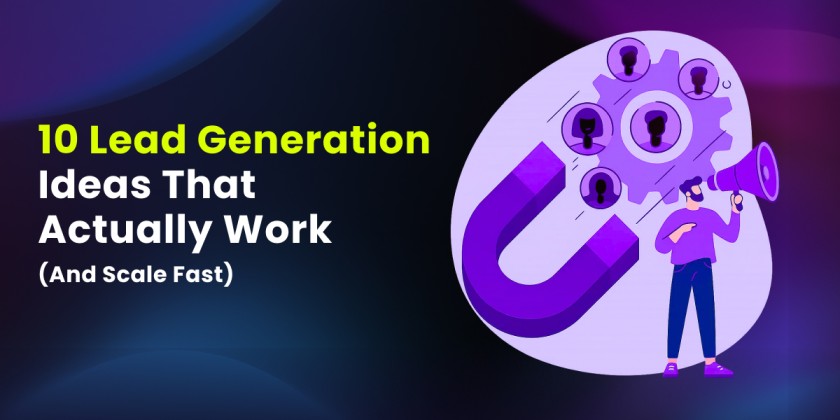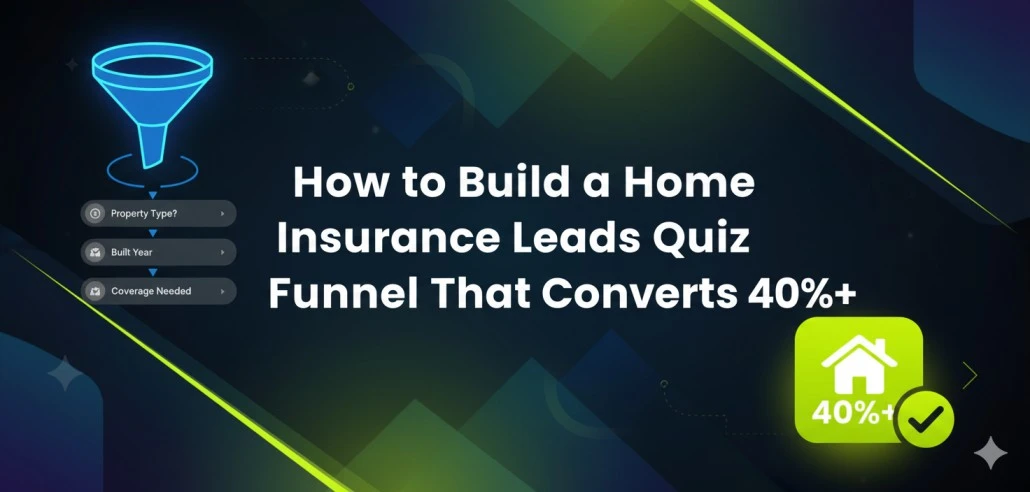Let’s be honest, generating quality leads has never been harder. Your prospects are drowning in emails, your ads are competing with thousands of others, and that perfect customer you’re trying to reach? They’ve become experts at ignoring marketing messages.
But here’s what separates the businesses crushing their growth targets from those struggling to fill their pipelines: the right lead generation tools working in harmony.
Whether you’re a B2B startup looking to book more demos, an agency managing multiple client funnels, or a performance marketer optimizing ad spend ROI, your success hinges on having the right lead generation infrastructure in place. If you’re planning a full-funnel strategy, consider our guide on building a successful lead generation campaign to establish a solid foundation before selecting tools.
Here are the 15 top lead generation tools in 2026, which enable you to:
- Create high-converting landing pages and forms
- Capture leads with smart workflows and chatbots
- Enrich contact data and qualify faster
- Schedule meetings and automate follow-ups
- Optimize every stage of the funnel for maximum conversion
Whether you’re an agency, a B2B startup, or a performance marketer, this list is packed with actionable tools to fuel your growth.
Benefits of Using Lead Generation Tools
Lead generation tools have transformed how businesses attract, capture, and convert prospects. Here are the key benefits that make these tools essential for modern marketing:
1. Increased Efficiency and Automation
Lead generation tools automate repetitive tasks like form creation, email follow-ups, and lead scoring. Instead of manually qualifying each prospect, you can set up automated workflows that nurture leads 24/7, freeing your team to focus on high-value activities like closing deals and strategy development.
2. Better Lead Quality and Targeting
Modern lead gen tools use advanced targeting and qualification features to attract higher-quality prospects. Whether it’s LinkedIn’s professional targeting, Typeform’s logic-based flows, or HubSpot’s lead scoring, they help you focus on leads most likely to convert. But to truly make the most of these tools, you also need to know how to qualify leads effectively; otherwise, you risk wasting time on the wrong prospects.
3. Scalable Growth Without Proportional Cost Increases
Unlike traditional marketing methods that require linear cost increases for more leads, digital lead generation tools allow you to scale dramatically. A single landing page, email sequence, or chatbot can handle thousands of prospects simultaneously without additional per-lead costs.
4. Real-Time Data and Optimization Insights
Tools like Hotjar, HubSpot, and Leadfeeder provide immediate feedback on what’s working and what isn’t. You can see exactly where leads drop off, which messages resonate, and which traffic sources convert best, enabling data-driven optimization rather than guesswork.
5. Improved Lead Nurturing and Follow-Up
Consistent follow-up is crucial for conversion, but manually staying in touch with hundreds of leads is impossible. Automation tools ensure no lead falls through the cracks, with personalized sequences, timely reminders, and behavioral triggers that keep prospects engaged throughout their buying journey.
6. Enhanced Customer Experience
Modern lead generation tools create smoother, more personalized experiences for prospects. From Typeform’s conversational approach to VideoAsk’s human touch, these tools make the lead capture process feel less intrusive and more valuable to the prospect.
7. Better Sales and Marketing Alignment
Lead generation tools provide shared visibility into the entire funnel, helping sales and marketing teams work together more effectively. Clear lead scoring, detailed prospect behavior data, and automated handoff processes ensure qualified leads receive immediate, appropriate attention.
8. Measurable ROI and Attribution
Unlike traditional marketing methods, digital lead generation tools provide clear attribution and ROI metrics. You can track campaigns across channels and content types to identify what drives the most valuable leads. To go deeper, make sure you’re measuring the right lead generation metrics like cost per lead, conversion rates, and time to conversion, for smarter budget allocation and strategy decisions.
How to Choose the Right Lead Generation Software
Define Your Requirements: Start by identifying your specific lead generation needs. Consider whether you need email marketing, social media lead capture, landing page builders, CRM integration, or multi-channel campaigns. Understanding your primary use cases will help narrow down suitable options.
Integration and Scalability: Choose software that seamlessly integrates with your existing CRM, email platforms, and analytics tools. Evaluate pricing models carefully, considering both current needs and future growth projections to avoid hitting cost barriers as you scale.
User Experience and Support: Look for intuitive interfaces that your team can adopt quickly without extensive training. Assess the quality of customer support, onboarding assistance, and available resources to ensure smooth implementation and ongoing success.
Analytics and Compliance: Ensure the software provides detailed reporting on lead sources, conversion rates, and campaign performance for data-driven optimization. Verify compliance with relevant regulations like GDPR or CCPA, plus strong security features to protect prospect data.
Comparison of the 15 Best Lead Gen Tools
| Software | Starting price | Free trial | Best for |
|---|---|---|---|
| LanderLab | $89/month | 7 days | Lead generation landing pages |
| Typeform | $25/month (Basic plan) | Available | Interactive form-based lead capture |
| OptinMonster | $9/month (Basic plan) | Unavailable | Conversion rate optimization |
| Hunter.io | $49/month (Starter plan) | Available | Finding verified email leads |
| LinkedIn Lead Gen Ads | Starts at ~$10/day (CPC model) | Not applicable | Pre-filled lead forms on LinkedIn |
| Calendly | $12/month (Essentials) | Available | Scheduling without email back-and-forth |
| HubSpot | $20/month (Starter CRM Suite) | Unavailable | All-in-one marketing automation |
| Hotjar | $39/month (Observe plan) | Available | User behavior insights |
| Mailshake | $58/month (Email Outreach) | 15 days | Cold outreach email automation |
| Intercom | $39/month (Starter plan) | 14 days | Conversational qualification via chat |
| Mailchimp | $13/month (Essentials plan) | 30 days | Email marketing with automation |
| Pipedrive | $14/month (Essential plan) | 14 days | Sales CRM and pipeline tracking |
| Leadfeeder | $139/month (Premium plan) | 15 days | Identifying anonymous website visitors |
| VideoAsk | $24/month (Grow plan) | 7 days | Video-based lead capture |
| Kit | $29/month | 14 days | Email + commerce automation for creators |
15 Best Lead Generation Tools & Software Listed
1. LanderLab
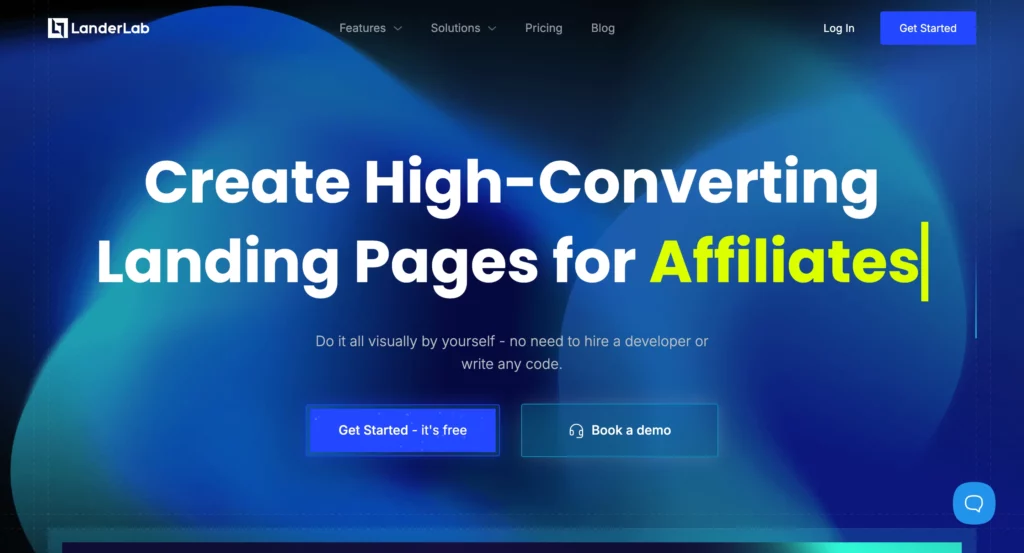
LanderLab is a landing page builder designed specifically for lead generation specialists.
With Landerlab, you can create high-converting landing pages from scratch, use one of 130+ ready-to-use templates, or import any landing page from the web using its URL importer.
It is designed to enable complex form construction with logic-based, multi-step flows and A/B testing, all without writing a single line of code.
What differentiates LanderLab from other builders is its integration with lead distribution systems, including LeadsPedia, Phonexa, Zapier, and others.
LanderLab starts at $89/month, with an annual plan at $69/month (save $240/year), offering features like a drag‑and‑drop builder, 50 published landing pages, 5 custom domains, and 100,000 visits per month.
Why LanderLab Stands Out:
✔
✔
✔
✔
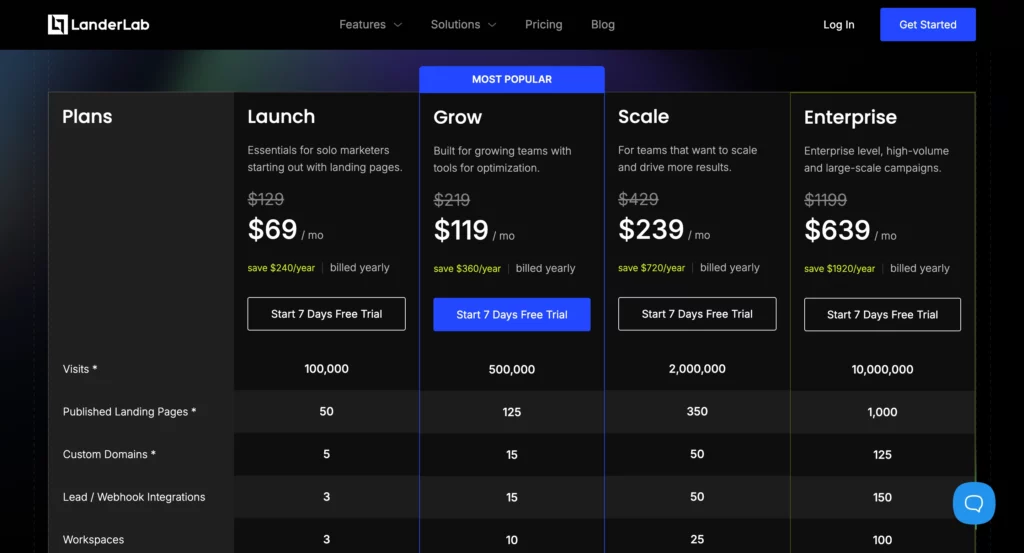
There are higher-tier plans available on LanderLab, but all plans include a 7-day free trial.
Ready to Build Landing Pages That Actually Convert?
Start your free 7-day trial with LanderLab and launch high-converting lead generation pages in minutes no coding required.
2. OptinMonster
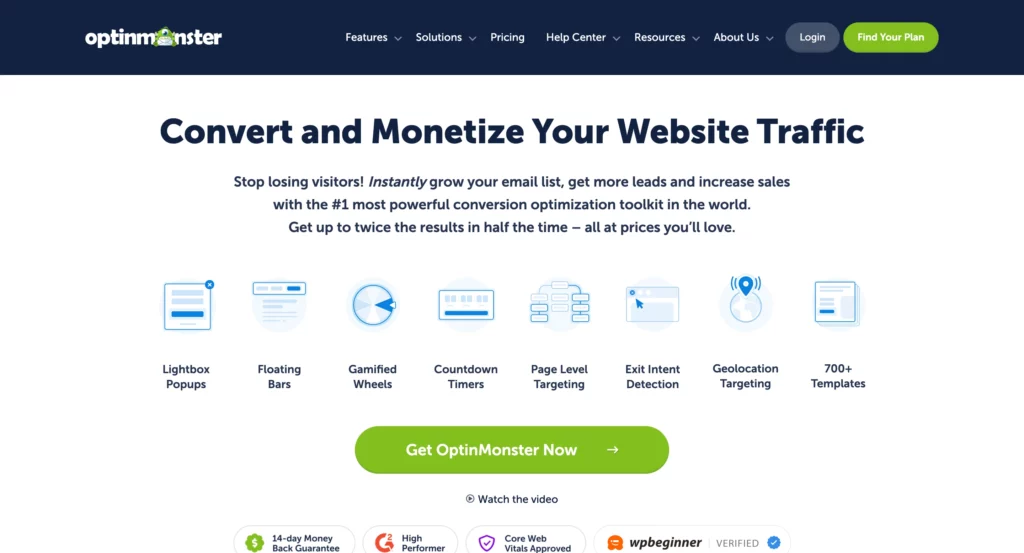
OptinMonster converts your visitors into subscribers and customers using popups, floating bars, full-screen overlays, and slide-ins. It sends the message to the right people at the right time using behavior-based targeting, like exit intent or scroll triggers.
It features several campaign types and drag-and-drop adjustability, enabling you to build compelling offers in just a matter of minutes. The in-app A/B testing allows you to refine messaging and design, while deep analytics provide valuable insights into what is converting most effectively.
Beyond simple lead capture, OptinMonster supports sophisticated audience segmentation and integrates well with the majority of email marketing applications and CRMs.
Why OptinMonster Stands Out:
✔
✔
✔
✔
3. Hunter.io
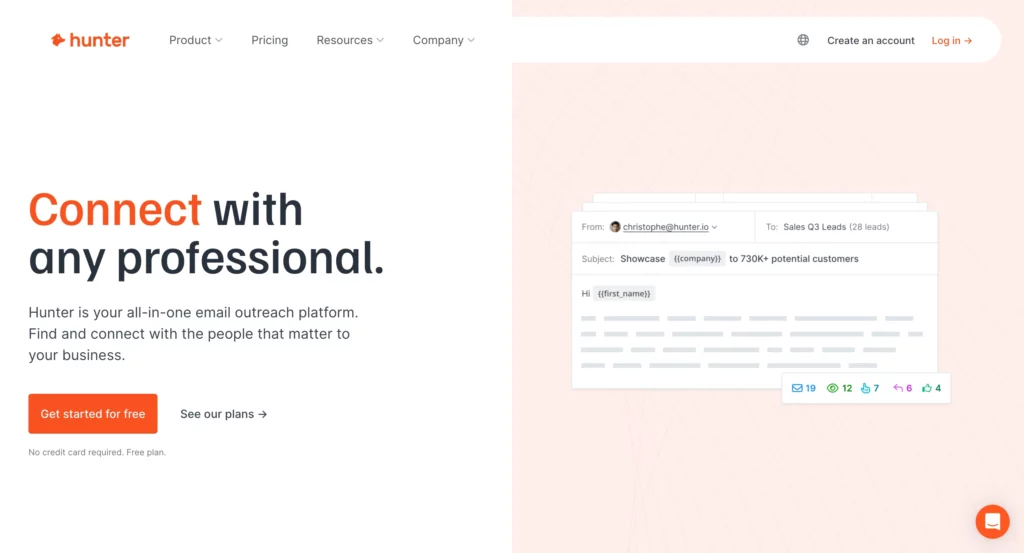
Hunter is a powerful email discovery tool that helps marketers and salespeople find verified email addresses associated with any company domain. Hunter is instrumental in generating outbound leads, B2B prospecting, and cold emailing.
With Hunter, you can search for a domain and download a list of public emails for the company with confidence levels and sources. A Chrome extension is also available for real-time email search browsing through LinkedIn or company websites.
Hunter’s Email Verifier keeps your outreach lists organized, and the Campaigns feature enables you to automate and personalize follow-up sequences within Hunter.
Why Hunter.io Stands Out:
✔
✔
✔
✔
4. Typeform
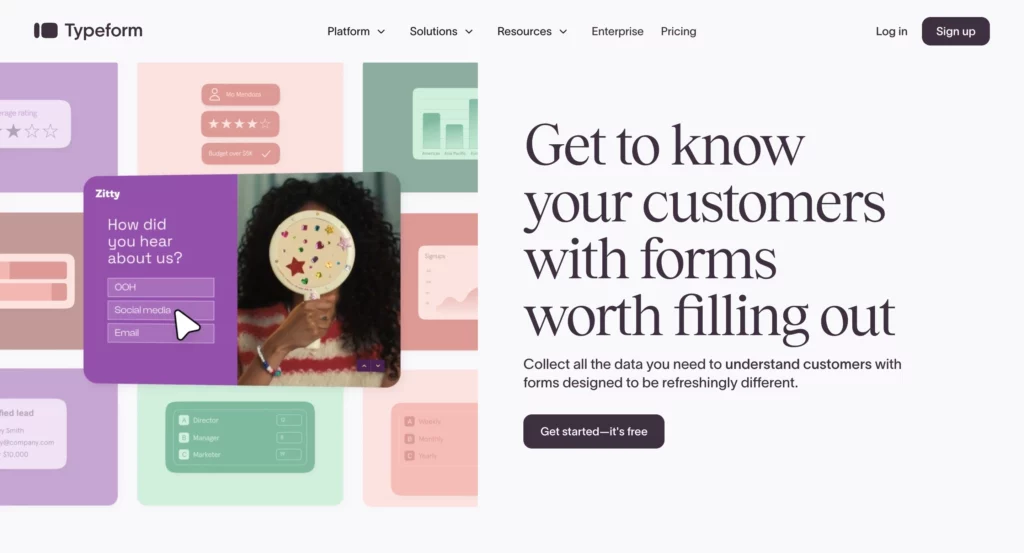
Typeform redefines lead capture through a talking, user-centric design for forms and quizzes. Rather than bombarding users with a form riddled with fields, Typeform shows one question at a time, building a more enjoyable, cozy, and mobile-friendly experience.
This format works very well for multi-step lead generation, onboarding sequences, and quizzes. Typeform supports logic skips, answer piping, and custom brandings, allowing you to create complex flows without writing code.
It is easy to integrate form responses with your workflow and supports integration with top tools like Mailchimp, HubSpot, Airtable, and Google Sheets.
Why Typeform Stands Out:
✔
✔
✔
✔
5. LinkedIn Lead Gen Ads
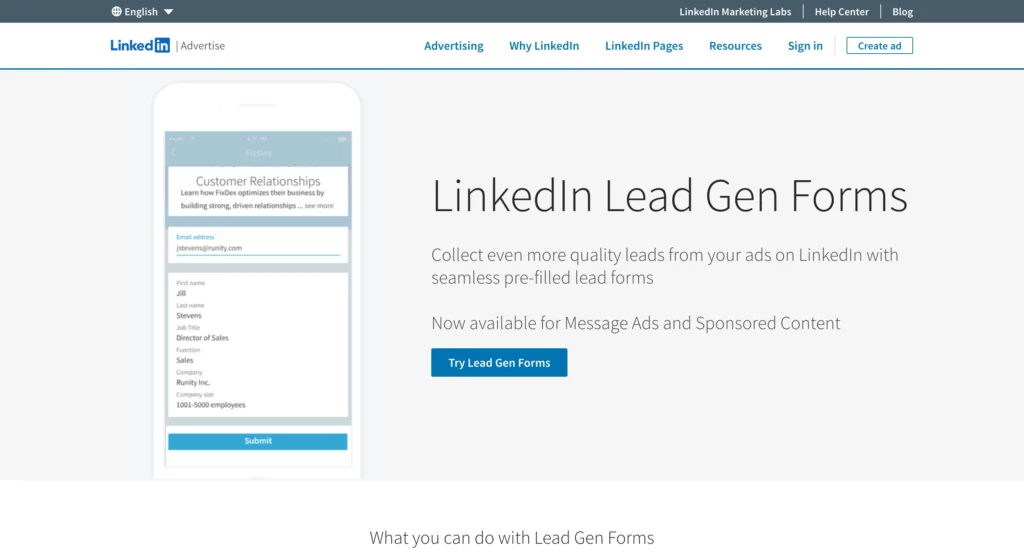
LinkedIn Lead Gen Ads make it easier to capture high-quality leads right within the LinkedIn platform. When your prospects click on your ad, a pre-filled form will appear with their LinkedIn profile data, allowing them to submit their information with just a few clicks.
These native ads are ideal for B2B marketers selling content downloads, webinar registrations, demo requests, and similar products. You can tailor forms, add qualifying questions, and sync lead information in your CRM or marketing system in real-time.
With laser-focused targeting options, such as job title, company size, industry, and seniority, LinkedIn Lead Gen Ads enable you to reach decision-makers and drive conversions without ever leaving the feed.
Why LinkedIn Lead Gen Ads Stand Out:
✔
✔
✔
✔
6. Kit
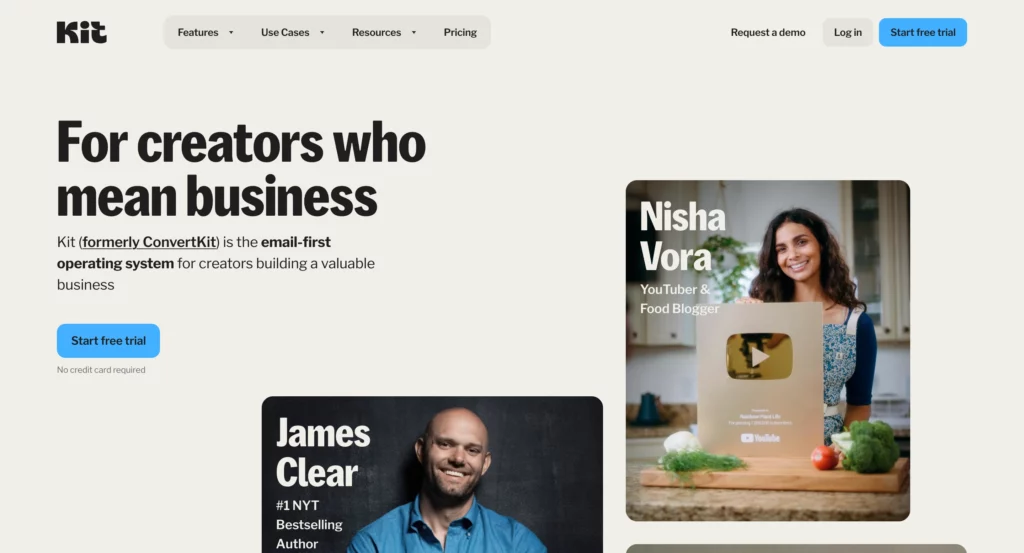
Kit (previously ConvertKit) is an email-centric platform designed for creators who want to build their audience and sell online content. It integrates landing page building, email marketing, automation, and commerce features into one simple-to-use dashboard.
Kit allows you to create unlimited opt-in forms and landing pages using professionally crafted templates. The system accommodates tailored email campaigns, A/B tests, and visual automation workflows driven by subscriber behavior.
What makes Kit special is that it already has an in-built function for selling digital products, subscriptions, and paid newsletters, without needing a third-party plugin or additional store. It also features the Creator Network, which helps users build their foundation through referrals and cross-promotion.
Why Kit Stands Out:
✔
✔
✔
✔
7. Calendly
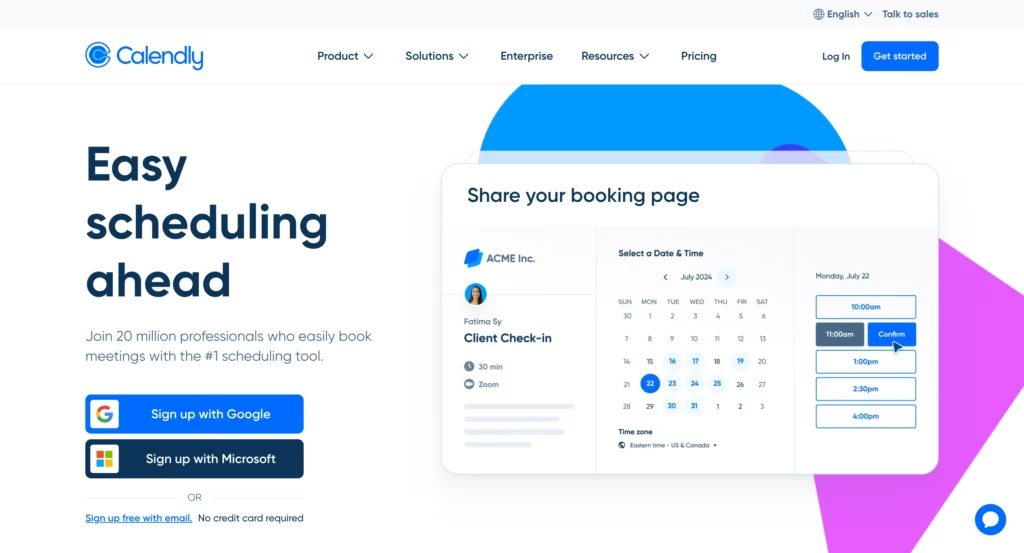
Calendly eliminates the back-and-forth scheduling that often loses prospects on the sales path. Send a personalized booking page with live availability with Calendly. Prospects select a free time slot, and the meeting is scheduled directly to both calendars, with buffer time, timezone detection, and reminders.
Calendly also offers round-robin routing, embed capabilities, and CRM integration, making it a significant conversion tool for the lead-to-demo process.
Why Calendly Stands Out:
✔
✔
✔
✔
8. HubSpot
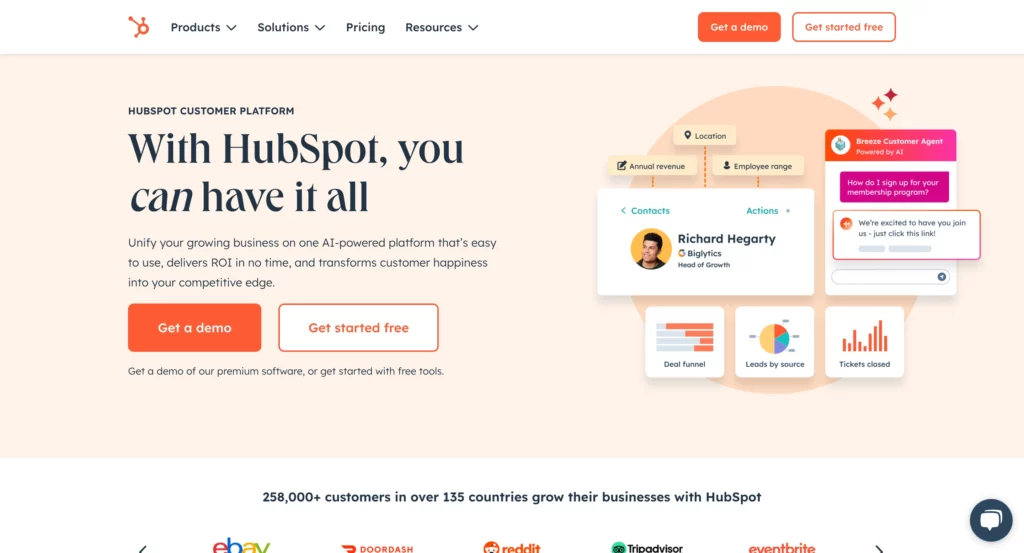
HubSpot provides you with access to robust lead capture features, including pop-up forms, slide-ins, chatbots, and live chat widgets, that integrate seamlessly with your CRM. The leads captured from these tools are automatically enriched, scored, and routed according to the rules you set.
With HubSpot’s email automation and marketing capabilities, it becomes an end-to-end lead gen and nurturing platform. Ease of use, combined with deep functionality, makes it a first-choice solution for teams seeking an end-to-end platform.
Why HubSpot Stands Out:
✔
✔
✔
✔
9. Hotjar
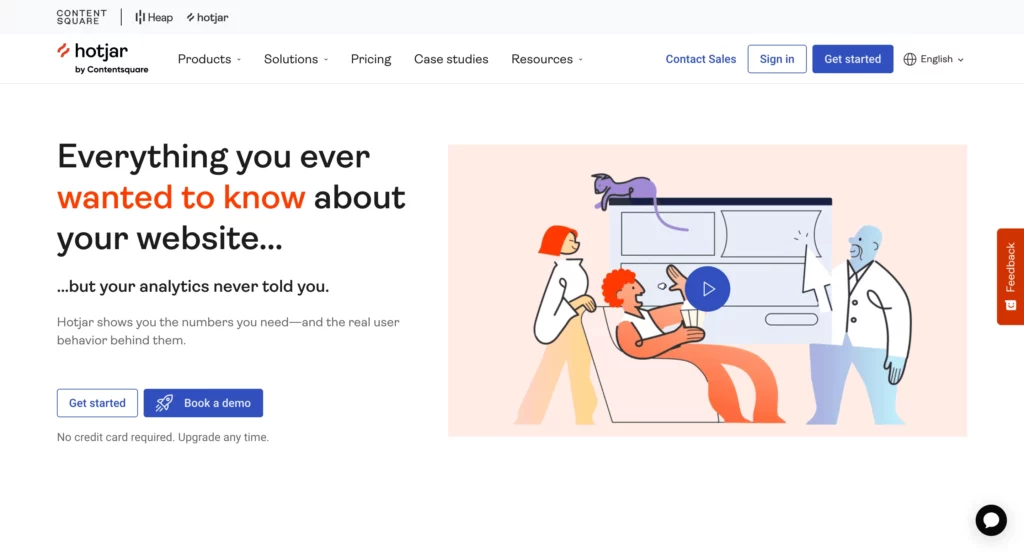
Hotjar offers heatmaps, session recordings, and on-page surveys to identify user behavior and friction points. You can see how your visitors interact with your pages and forms, and where exactly they become stuck or drop off.
For lead gen, this information is worth its weight in gold. It allows you to refine layout, copy, and form design based on actual user feedback, resulting in higher conversion rates across the board.
Why Hotjar Stands Out:
✔
✔
✔
✔
10. Mailshake
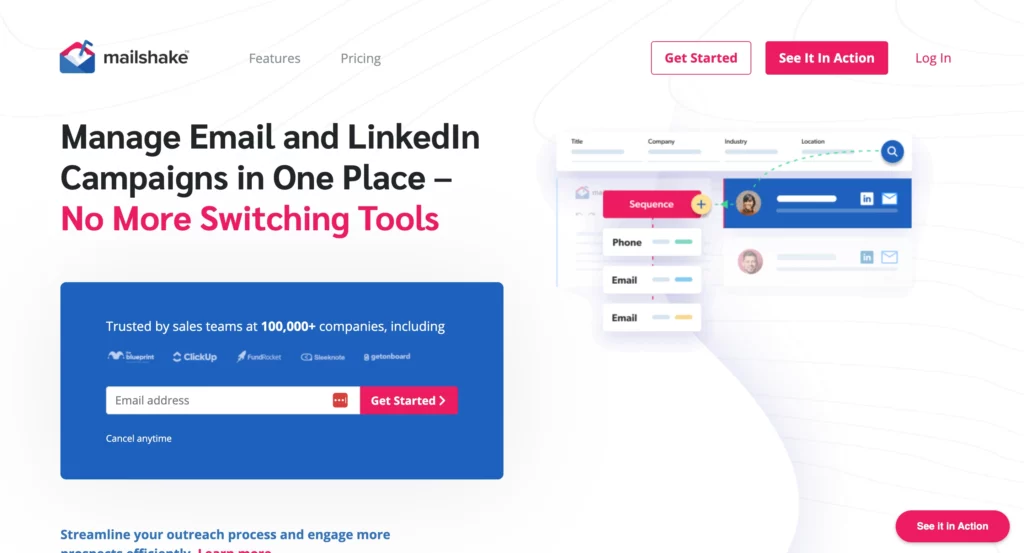
Mailshake is an effective sales engagement platform designed for cold outreach via email, phone, and social media. It enables marketers and sales professionals to craft targeted outreach sequences, automate follow-ups, and monitor performance in one single dashboard.
Notably, it comes with its own native AI assistant that assists in generating and optimizing cold email copy, subject lines, and follow-ups, thereby saving time and enhancing personalization. Mailshake also includes deliverability features such as email warm-up and domain health monitoring, ensuring that campaigns are not trapped in spam folders.
With features such as “Lead Catcher” for reply management, native dialer integration, LinkedIn automation, and CRM syncs, Mailshake provides an end-to-end outreach solution that grows with your team.
Why Mailshake Stands Out:
✔
✔
✔
✔
11. Intercom
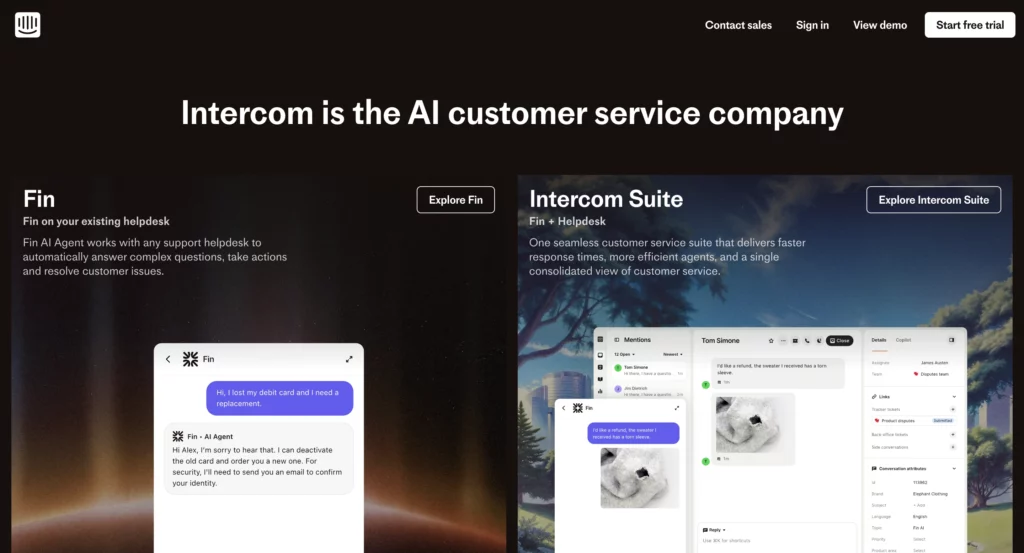
Intercom is a behavior-driven engagement platform that brings together live chat, AI-driven automation, and proactive messaging to enable businesses to capture and convert leads in real-time. With its very adaptable chat widget, you can qualify leads at the behavior level of your website visitors and trigger automatic lead qualification conversations even before your salespeople intervene.
Its AI-powered assistant, Fin, can respond to questions in the speed of light and guide conversations according to rules you set.
You can even add scheduling links, forms, or product tours right into the chat conversation and convert passive visitors to active prospects. Intercom’s robust inbox and automation features enable you to automate the entire lead response process.
With multilingual support, CRM integrations, and advanced routing capabilities, Intercom offers the most significant value to SaaS businesses and large enterprise teams that need to scale lead generation through intelligent, real-time conversations.
Why Intercom Stands Out:
✔
✔
✔
✔
12. Mailchimp
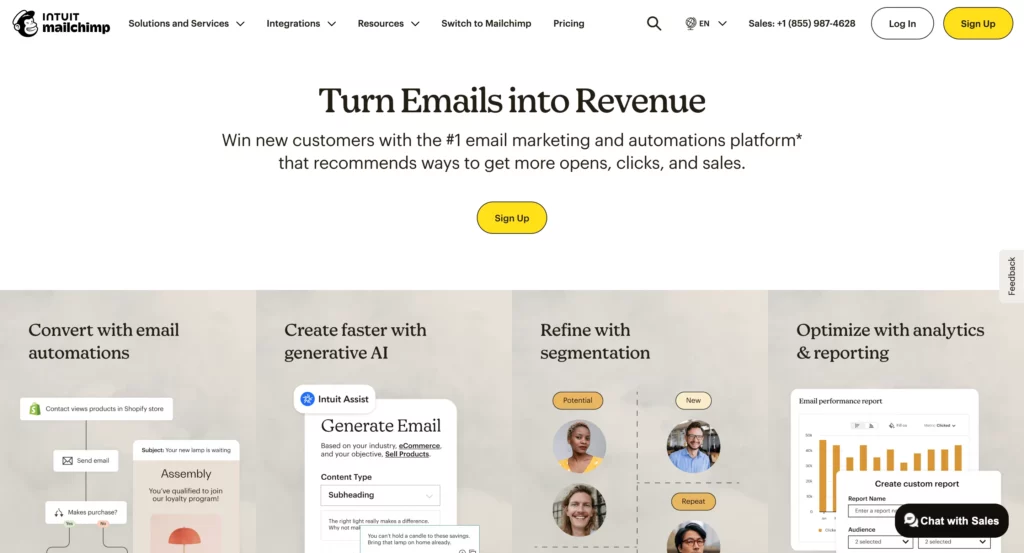
Mailchimp is a list-building veteran, all-in-one marketing platform with a focus on email outreach and automation. Its email-first approach enables leads to be captured and nurtured using easily editable sign-up forms, pop-ups, landing pages, and email journeys.
The platform’s AI-powered capabilities enable you to craft content instantly from subject lines to email copy, while segmentation and predictive suggestions facilitate personalized messaging at scale.
For lead generation, workflows in Mailchimp can trigger welcome emails, nurture sequences, and lead scoring based on user behavior, such as signing up for a form, visiting specific pages, or showing interest in a purchase.
Whether you’re a small business just building an email list or a large brand running multi-channel campaigns, Mailchimp scales with you, though pricing can get steep as your contact list grows.
Why Mailchimp Stands Out:
✔
✔
✔
✔
13. Pipedrive

Pipedrive is a simple, sales-focused CRM with built-in lead capture forms (via the LeadBooster add-on) that seamlessly embed directly within your website. Web Forms push leads directly into your pipeline, triggering automated follow-ups or chatbots with no manual intervention.
Its visual deal pipelines, contact sync, and email integration enable teams to track, qualify, and follow up on leads without pause.
As your outreach increases, add-ons such as LeadBooster ($32.50/mo per company) include chatbot, live chat, and prospecting functionality; Campaigns ($16/mo+) provide email marketing; and Web Visitors ($49–$299/mo) identify anonymous website visitors.
Why Pipedrive Stands out:
✔
✔
✔
✔
14. Leadfeeder
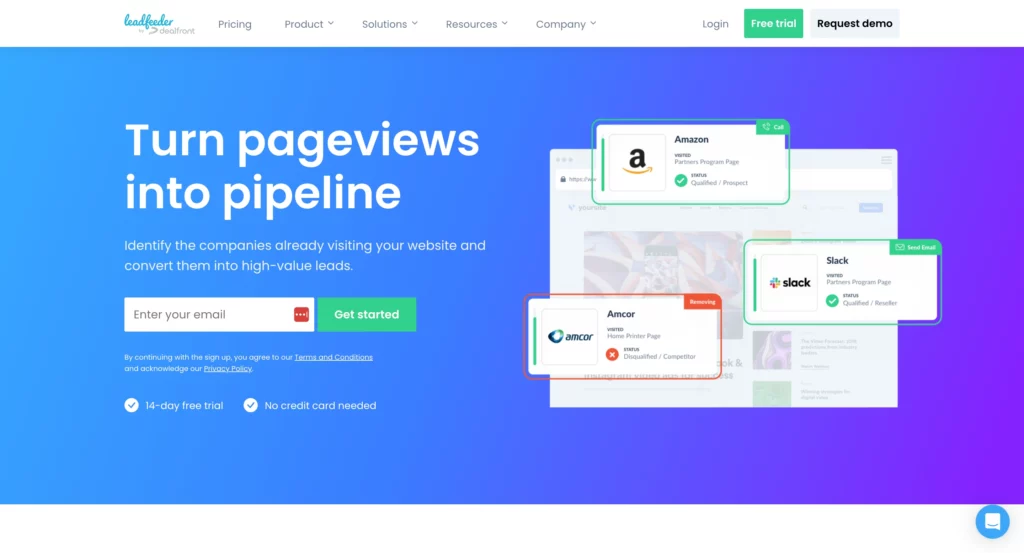
Leadfeeder is a B2B lead generation software that identifies unknown company website visitors and enriches them with company data, visitor behavior, and contact details, enabling sales and marketing teams to find high-intent leads.
Once connected to tools such as Google Analytics and your CRM, it can automatically generate activity alerts or company leads using Slack or email. You can customize feeds and segments using filters like downloads, page views, industry, and geolocation. Its activity monitoring and real-time notifications (demo or price page visits) help you respond instantly to prospects who are most interested.
This software turns passive web traffic into active leads, so you can reach out to them before they complete forms, and allows you to capitalize on traffic you’d otherwise lose.
Why Leadfeeder Stands Out:
✔
✔
✔
✔
15. VideoAsk
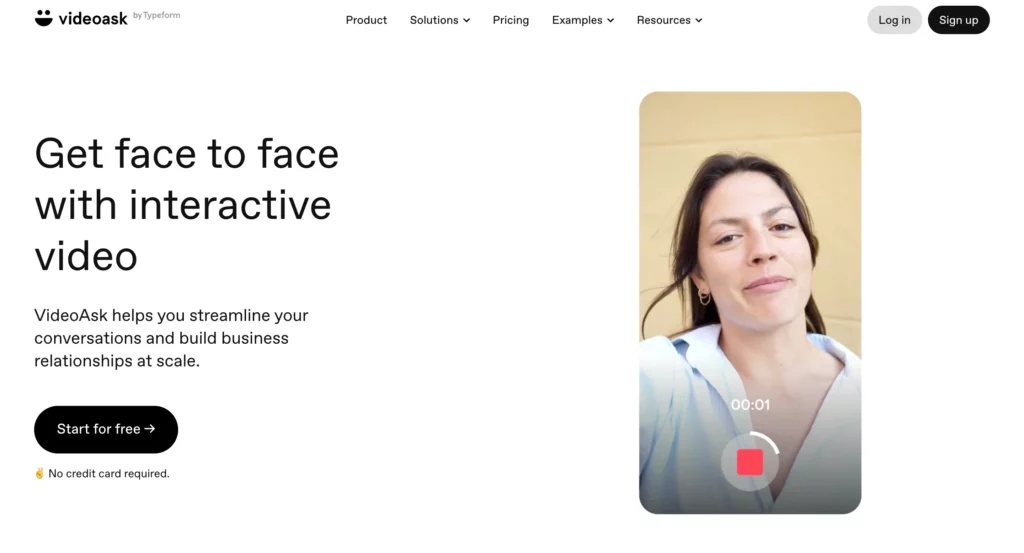
VideoAsk, by Typeform, is a conversational video tool that turns pre-recorded videos into interactive lead capture forms. Instead of static CTAs or chat widgets, visitors are greeted with a short, personal video that invites them to reply by text, audio, or video — breaking down barriers and boosting response rates.
You can embed VideoAsk on landing pages, product pages, or emails. It supports branching logic (like quizzes or funnels), integrates with CRMs and calendars, and allows conditional routing based on viewer input. It’s especially effective for high-ticket offers, consultations, or personal brands wanting a human touch.
By combining video engagement with lead capture logic, VideoAsk helps you stand out and build trust before a lead even fills out a form.
Why VideoAsk Stands Out:
✔
✔
✔
✔
Final Thoughts: Building Your Lead Generation Stack
There’s no one-size-fits-all tool for lead generation, and that’s the point. The most successful marketers build a custom stack based on their funnel, goals, and team workflow.
Some of the tools help you capture leads from forms, landing pages, or pop-ups. Others are intended for outreach, enrichment, automation, or live conversations. Each tool on this list does one thing, and collectively, they have the power to create an efficient system for attracting, qualifying, and converting leads on a large scale.
Begin by determining where your existing funnel can be improved: traffic capture, lead nurturing, quicker follow-up, or segmentation? Then, select the tools that perform that role and are integrated smoothly into your existing infrastructure.
Lead generation is part strategy and part technology. With the proper software, you’ll get there more quickly, learn more quickly, and convert more of your marketing into something measurable.
Frequently Asked Questions
What is lead generation, and why is it important?
Lead generation is the process of attracting and converting strangers and prospects into someone who has indicated interest in your company’s product or service. It’s the most important and challenging element of any marketing strategy because it directly impacts your sales pipeline and revenue growth.
How do I choose the right lead generation tools for my business?
Start by identifying where your existing funnel needs improvement: traffic capture, lead nurturing, quicker follow-up, or segmentation. Then select tools that perform those specific functions and integrate smoothly with your existing infrastructure. Consider your business type (B2B, B2C, SaaS, etc.), team size, and budget when making decisions.
Can I use multiple lead generation tools together?
Absolutely! The most successful marketers build a custom stack using multiple tools. Some tools capture leads (forms, landing pages), others handle outreach and enrichment, while others focus on automation or live conversations. The key is ensuring they integrate well together.
Put Your Lead Generation Stack Into Action
Choosing the right tools is just the start. Combine strategy with execution by building high-performance pages using LanderLab, and turn your traffic into real revenue.

